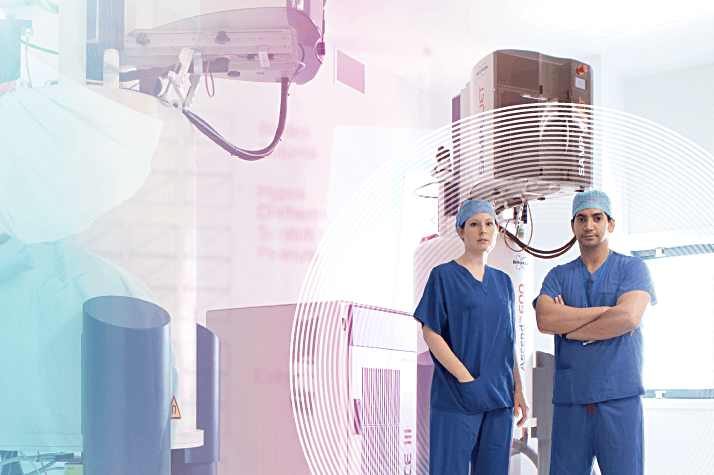
By Jeremy Nicholson, Chair in Biological Chemistry and Head of the Department of Surgery and Cancer at Imperial College London. I have quite an unusual background in chemical sciences and pathology, which culminated in me becoming the Chair in Biological Chemistry at Imperial College London in 1998. I’m still in that role, but I also became the Head of the Department of Surgery and Cancer at Imperial about five years ago. I’m probably the only non-clinical professor in charge of a clinical department anywhere in the world. How did that happen? Well, contrary to popular belief, managing clinicians is not necessarily a clinical job – it’s actually about research vision and coordination of scientific activity, especially in such a large department. Notably, the department is more than just surgery and cancer; I also have reproductive medicine, anesthetics, pain medicine, critical care, obstetrics and gynecology, hepatology and gastroenterology all reporting to me in terms of academic structure. And there is a big division in the department called Computational and Systems Medicine, which has about 180 non-clinicians. The MRC-NIHR National Phenome Centre is part of this latter division and took on the legacy of the state-of-the-art drug testing analytical laboratory from the 2012 Olympics games. In July 2013, we repurposed the analytical tools therein for epidemiology-scale population phenotyping.
We also have a clinical string to our phenome bow. At the Imperial Clinical Phenotyping Centre, I look after the stratified medicine research team. The focus there is on personalized healthcare – trying to identify new targets, looking at unmet disease needs, and understanding the areas where personalization does and does not work. A very important part of this is molecular phenotyping,particularly metabolic phenotyping. We’re also interested in the overall patient journey and how we can optimize it by understanding metabolic changes. We can use metabolic information from NMR or mass spec at the beginning of the journey as a diagnostic tool, but also in the interventional stage, when we are interested in monitoring patient progress over time. Beyond that, prognostic modelling based on previous patient journeys can be used to predict the outcome of a particular therapy, which brings us back to personalization. By using metabolic phenotyping, we can stratify patients not only into disease subclasses but also into treatment regimes. It’s an extremely advanced stratified medicine program that integrates genomics, metabolism and meta-genomics. Going back to the MRC-NIHR National Phenome Centre, we use a range of similar technologies – NMR and mass spec – with a high degree of analytical overlap with the Clinical Phenotyping Centre. Clearly, the aim is quite different – epidemiology informs future healthcare policy –so we are interested in linking metabolic phenotypes with disease risk. What’s unusual – perhaps unique – about our department (apart from having a non-clinician running it!) is this alpha–omega approach to metabolism. We go all the way from disease risk and general population phenotyping, through to monitoring patient journeys and into instantaneous diagnostic tools like the iKnife, the iEndoscope and associated technologies that could potentially affect second-to-second decision making by surgeons.
I recognized quite quickly that Zoltan Takats – inventor of the iKnife – matched our profile for advanced technology in the department perfectly. I also realized that he would probably be able to build on that technology faster in a world-leading surgical setting. The iKnife – and the rapid evaporative ionization mass spectrometry (REIMS) technique at its heart – gave us another angle on metabolic diagnostics. It also fit in well with the long-standing strategic relationship we have with Waters Corporation, who actually acquired the REIMS technology in July 2014. Funnily enough, a year or more before I heard about Zoltan’s research, I’d been talking with Waters about an idea for an electrosurgical knife adapted for mass spectrometry. It seemed obvious to me that the smoke could be a rich source of information. In fact, Lord Darzi (ex-Minister of Health and a surgeon in my department) and I received a grant from our National Institute of Health Research (NIHR) Biomedical Research Centre to work on the development of a prototype iKnife technology. We’d only had the grant about three days when I saw Zoltan’s first paper in Angewandte Chemie. But if you can’t beat them – join them. Or get them to join you.
We hired Zoltan and his team shortly after, and it turned out to be one of the best moves I’ve ever made. I have to give credit to Zoltan as the inventor of the iKnife – but it could have been me! Actually, Zoltan is a world-class mass spectroscopist and I couldn’t really hope to match his efforts in that technology area. It seems that everyone wants an iKnife – if you could get a truckload you could sell the things in a hospital car park... But seriously, we have to be careful about who we partner with because it needs to go through clinical trials, as it is extremely patient facing. There is still a lot of work to do, but we move into clincial trails this year. Likewise, desorption electrospray ionization (DESI) imaging – another of Zoltan’s inventions – was transformed when it came to Imperial. Previously it was being used in a univariate-imaging mode, but we’ve really pushed the capabilities into multivariate imaging, which is vastly more informative and makes DESI an exciting new, orthogonal molecular pathology tool. The chemistry that’s generated in DESI imaging has a great deal of overlap with REIMS – so you can use one database to populate the other. If you link histopathology with mass spectrometric imaging, a pathologist can identify a particular carcinoma and the associated chemical signature, which can link back to the iKnife. It’s beautiful because you can slip data from one to the other as it builds a bridge between real-time diagnostics and pathology. And by using statistical total correlation spectroscopy (something we invented for NMR-based biomarker structure elucidation) with DESI-MS , we’ve built a bridge between biology and network biochemistry. I find it very satisfying analytically that these aspects connect together in such a way.
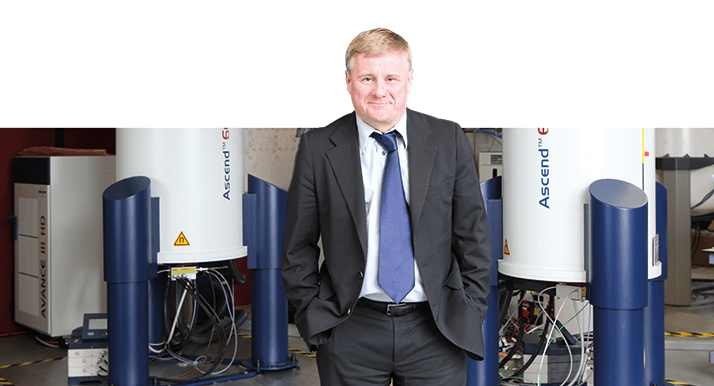
Strategy is clearly important (see “Taming a Clinical Department” below). But it’s not just about strategic vision, it’s also about good timing and bit of luck – like most things in science. I happened to be the right person to pull this together at the right time. And we have the funds to make it work. Working in a clinical department gives you access to a great deal of funding that you could never hope to attain as a basic scientist. I can honestly say that the last five years have been the most challenging, interesting and enabling of my entire career as a scientist.
It’s also fair to say that if it weren’t for the 2012 Olympic games, we would have found it difficult to pull together the instrumentation needed to make epidemiological phenotyping a reality. Acquisition at such scale is unprecedented, but given industry funded front end payments for Olympics drug testing and a grant from the Medical Research Council (MRC) and NIHR, we acquired a suite of instruments that includes about 20 mass spectrometers and three NMR systems, which gives us the bandwidth needed to deal with potentially up to 100,000 samples each year, with anything up to 10 assays per sample. How does it work? Well, we might take 10,000 samples from a population study on blood pressure, and attempt to link diastolic blood pressure to metabolic variables to understand the roots of high blood pressure. We have National Phenome Centre projects running on cardiovascular and respiratory diseases, Alzheimer’s disease, ovarian cancer – and the list is growing. Many of the studies also have genomic data, which allows us to perform a statistical data fusion with our phenotypic data to produce system level models that can inform us about risk factors and the pathogenesis of diseases.We’ve got lipodomics platforms, reversed-phase UPLC-MS platforms, hydrophilic interaction chromatography for very polar molecules, and NMR-based assays for metabolome exploration. But we also have UPLC-triple quad MS for multiple targeted assays.
In essence, the National Phenome Centre is a combination of analytical methodology and huge bioinformatics capability (to the tune of about £30 million, thanks to the MRC, NIHR, EU, Waters Corporation and Bruker Biospin) and the strong basis for a successful template, from sample handling to analytical chemistry to statistics, which can be recreated anywhere in the world. And the same can be said for the clinical phenotyping center. Indeed, now that the strategy is working, others are looking at the model and hoping to replicate it. In fact, we are setting up a network of phenome centers that use harmonized technology and methodology. If you do a study in our lab or at Nanyang Technological University in Singapore, you should be able to get the same answer. Historically, that hasn’t been true in metabolic science because people have their own pet methods and instruments. Clearly, if you want to implement technology in a clinical setting – whether it’s the iKnife or urinary metabolic profiling – it must be standardized, validated and widely accepted.
Analytical chemistry is at the heart of our efforts. There is no progress in biology or medicine without analytical chemistry, which is something that people can lose sight of. Imagine the Human Genome Project without DNA sequencing... The next generation of medicine is going to be enabled by analytical chemistry. In a way, it’s my job to educate medics that they need more analytical chemists around. Creating a research strategy that entirely revolves around an area of science where we are considered to be world class has certainly helped get everyone on board. But in the modern world you have to run to stand still, and race to stay ahead. There is no time for complacency; achieving the translational goals that we have set is a great and ever shifting challenge that will take many years of hard work. Per ardua ad astra!
Scientists are clearly trained in very different ways to doctors. What we do in medical education (which in my opinion is completely out of date) is to completely silo people. By the time someone becomes a proficient expert – a nephrologist, hepatologist, or neurologist – they end up knowing very little about anything else. Because the Department of Surgery and Cancer is so broad, it contains the whole gamut of doctor phenotypes – from surgeons to baby specialists – that don’t mix well scientifically. When I inherited the department it was a shambles in terms of strategy, with no unifying features. As a non-siloed scientist I was able to step back and look at the big picture, and start connecting people in different ways. In fact, I decided to unify the department by focusing on a personalized healthcare theme based on systems biology and computational/analytical technologies. It enabled an entirely different approach to interlinking multidisciplinary teams and projects. It also proved that having a research plan and sticking to it does actually generate money... Of course, it wasn’t easy. Part of the success stems from understanding what everyone does. Paraphrasing Chinese military general Sun Tzu: if you know your troops and know your enemy, you can fight a hundred battles without fear of loss. And so, when I became head, I visited every research group to find out what they were doing. It took me 18 months – there are nearly a thousand people in the department (over six campuses). I then had to map out the activity and figure out what groups could work well together. I actually used systems biology modeling methods to survey the department, using self-organizing mapping and advanced multivariate statistics to optimally bridge groups. Introducing such a large amount of core science into a clinical department has turned out to be an extremely successful strategic gamble. Many major medical institutions support basic connections with physical science, engineering, mathematics, computing, and so on. But adding groups, such as systems biology, directly into the clinical department is a much more efficient way of working. It means that the scientists, engineers and mathematicians gain a better understanding of the clinicians, the challenges and the big picture. In essence, lowering the communications barrier to facilitate collaborative research is key.
In the second article, Ron Heeren showcases the new M4I institute, and in the final article, Steven Olde Damink offers a surgeon’s perspective.
By Ron M.A. Heeren, co-director of the Maastricht MultiModal Molecular Imaging Institute (M4I). Molecular imaging based on mass spectrometry provides a broad scope of analytical, molecular and local information that can be employed for patient phenotyping. Within M4I – the Maastricht MultiModal Molecular Imaging institute – we develop innovative technologies to generate and discover more detailed knowledge that enables surgeons to perform tissue typing ‘on-the-fly’.
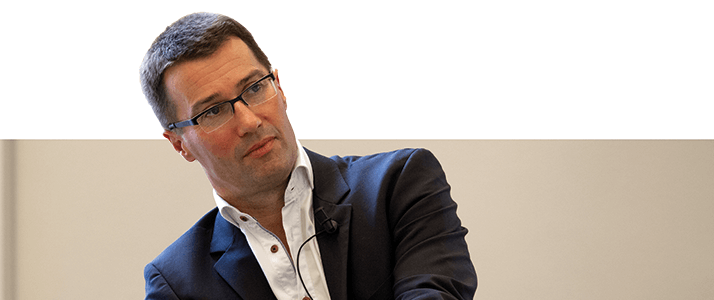
Coming from a technological environment (FOM-AMOLF), I felt that we needed to translate our new imaging technologies into the clinic – becoming one of two directors at M4I enabled me to do that. The possibility to collaborate closely with Steven Olde-Damink (a surgeon), Peter Peters (a nanobiologist) and Clemens van Blitterswijk (regenerative medicine) was an enormous motivator for me and it also essentially allows me to take my research to a higher level – in the pursuit of personalized medicine. Personalized medicine requires different molecular datasets to be generated in a concise manner. Imaging mass spectrometry is a unique discovery method and I would say the main enabling high-throughput technology for this purpose. Personalized diagnosis relies on the quick and complete characterization of, for example, patient biopsies. Once we gain sufficient information, it can be directly employed to ‘train’ smart surgical devices, such as the iKnife.
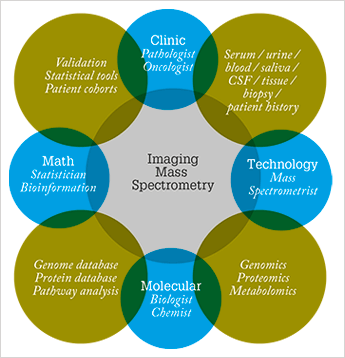
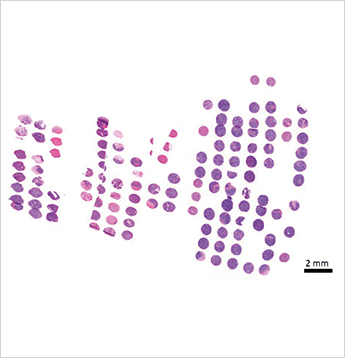
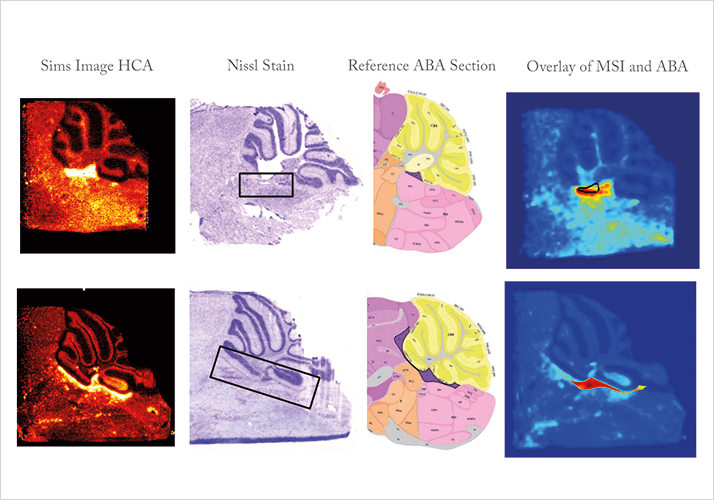
Maastricht University and the regional government have invested to strengthen the knowledge infrastructure for life sciences and health so that we can lead the European molecular imaging scene. Indeed, M4I offers a unique combination of enabling technologies for personalized medicine at the molecular scale, the cellular scale, the tissue scale and, most importantly, at the systems level scale. In particular, we are developing new technologies that push the boundaries of MS imaging. We strive to enhance throughput, speed, spatial resolution, sensitivity and molecular resolution with a combination of fundamental, instrumental and applied research. We cover the whole story from nanoscopy to patient diagnosis within one institute, and everything must be embedded within clinical practice. And that isn’t easy; the biggest hurdle was a logistical one – how could we house dozens of researchers and instruments in an existing infrastructure and bring everything up to the state of the art?
The answer was getting the right people. The new molecular imaging teams within M4I have the right expertise and capabilities to conduct truly translational research. The team is made up of a broad range of analytically-driven scientists, including (but not limited to) physicists, (bio-)chemists, material scientists, bioinformaticians, pathologists and clinicians. As a young university, Maastricht offers a stimulating environment. Facilitating and embracing multidisciplinary teams is a prerequisite for success in a day and age where the problems we tackle have become too complex for a single discipline. I think the unique element in our new endeavor is that different scientific cultures are able to open up and collaborate without hesitation. Finding surgeons who are willing to ask researchers how they can best optimize surgical protocols to improve personal molecular diagnosis is a real eye-opener. And it is indicative of the innovative attitude found at the Maastrict University Medical Center (MUMC).
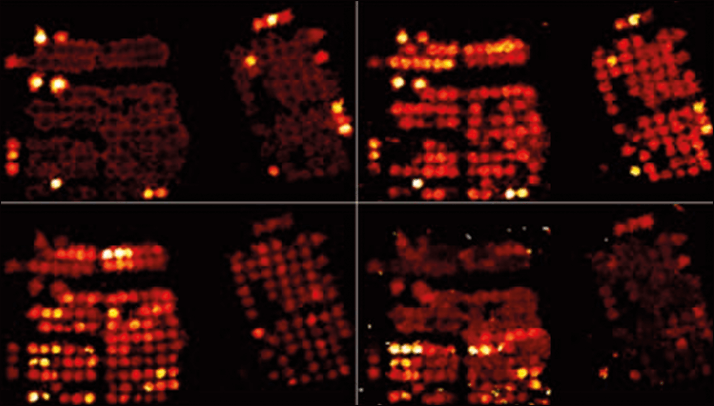
Success will come from a shared goal. The surgeons and the rest of the team at M4I know that better molecular diagnosis will result in more targeted treatment, which will in turn improve the patient’s prognosis and reduce the use of less effective therapies. For example, precise surgical margin determination during surgery reduces the chance of cancer recurrence, which has a clear impact on the quality of life for patients in the clinic. One thing is clear. The institute’s output in three years must feed directly into the clinic and contribute to improve health care. That is how we will make personalized medicine a reality.
By Steven Olde Damink, Consultant Surgeon Hepato-Pancreato-Biliary Surgery at Maastricht University Medical Center, Associate Professor of Surgery, and Director Research Laboratories Director, Department of Surgery, Maastricht University.
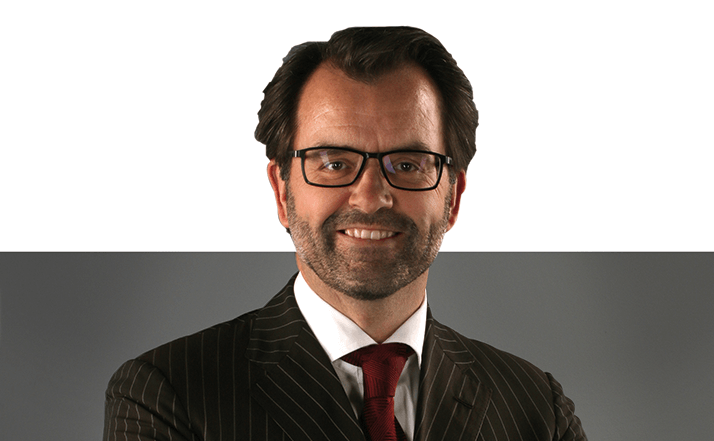
Two years ago, I built up the courage to travel to Amsterdam to convince Ron Heeren that he and his team needed to move to Maastricht, build a world-class MS imaging (MSI) institute, and directly embed it in a clinical environment. Such an institute, I believed, could bridge the gap that traditionally exists between the development of new technology and its clinical application. Indeed, the project’s big ambition is to fully exploit the integration of new technological imaging developments within the clinical environment. In the process of developing the idea for the Maastricht MultiModal Molecular Imaging Institute (M4I), Frans Ramaekers (scientific director of the MUMC research school GROW) was also able to attract Peter Peters (now co-director of M4I). Although Peter had a great offer on the table to move from NKI to Delft, the integrative nature of M4I convinced him to settle in Maastricht. Today, my role in the project is as initiator and clinical bridge/liaison.
The primary value of M4I really lies in the investment in human capital (rather than simply MSI hardware). Ron’s team is at the forefront of the development of MSI equipment (fundamentals, technology) and application (desorption, detection). But we also needed buy in from specialists in instrument development, physicists, chemists, medical specialists, pathologists and translational scientists. Bringing MSI techniques into clinical practice requires rapid standardized measurements. Up until this point, technical development typically focused on discovery, so we needed a different slant. The multimodal approach appears to easily attract the talent we need from various research fields, but the key to our success will be based on the willingness of all team members to have an open mind to each other’s field, specific scientific language and modus operandi. To optimize collaboration, we decided to mix the research teams across all research offices and to have common research meetings and seminars. That said, the clinical research culture is very different from the research culture of chemists and physicists. According to the science philosopher Thomas Kuhn, the two sides may have difficulty learning each other’s language and adapting to it. But hopefully this cultural border will create just enough research tension to result in Kuhn’s predicted “scientific revolution.”
Mass spectrometry imaging provides insight into the molecular basis of a clinical problem. Consequently, the nature of a problem can be defined more accurately – and the treatment adjusted accordingly. It becomes even more powerful when it is merged with other omics data, such as genomics and transcriptomics. Clustering objective patient information provides more insight in diagnosis and therapeutic success (response) – and it is independent of personal interpretation or insight (the various ‘schools’ of teaching). It can also help ensure that patients receive optimal treatment or, perhaps even more importantly, prevent the use of unsuccessful or harmful treatments; for example, chemotherapy being given to ‘non-responders’.
As a surgeon, it is of the utmost importance to know the nature of the tumor you are about to operate upon. However, it is sometimes still difficult to obtain the correct diagnosis using standard pathological screening. Mass spectrometry imaging may give us the opportunity to gain a more specific and objective diagnosis ahead of surgery.
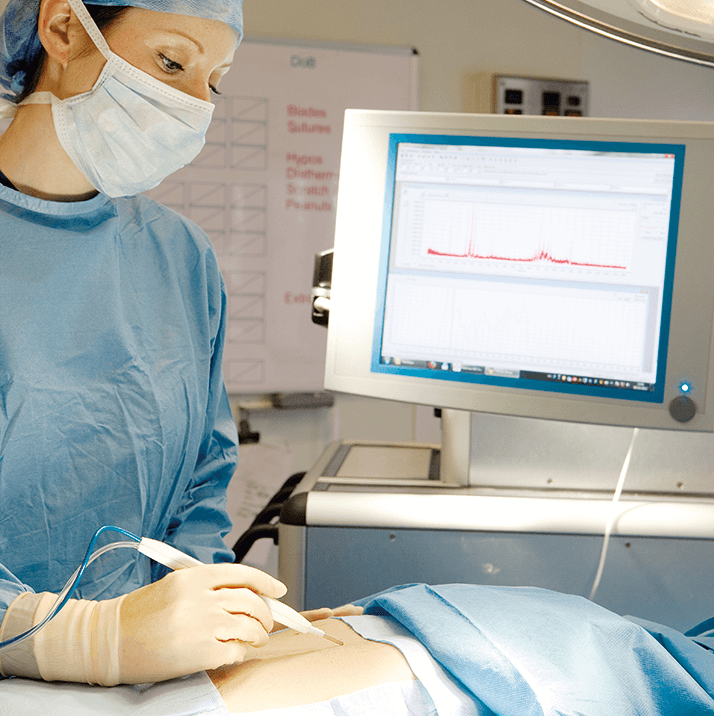
The research group of the Department of Surgery actually has a strong history of translational (metabolic) research. Specifically, we are strong in developing of specific human (patient) models to answer research questions, which allows us to move away from experimental animal models and therefore avoid the (patho-)physiological differences between species. It is my belief that most real changes are driven by technological (and that is to say analytical) advances. The close collaboration between hardcore scientists all focusing on the development of new tools that help guide treatment and predict (and evaluate) treatment success makes this initiative fascinating. There are also exciting developments in real-time diagnostics; we hope to implement MSI into the operating room were it could provide on-the-spot information on the tissue the surgeon resects. Such techniques could potentially avoid incomplete tumor resection by giving detailed molecular information about the cut-section, allowing surgeons to continue operating if necessary. And working with surgeon scientists allows Ron and Peter’s team to obtain optimally prepared human samples for imaging research. I think the biggest challenges we face are the standardization of analytical techniques and the building of metabolic profile libraries of diseases. In this latter endeavor, access to to the right patient samples is essential. No doubt, the introduction of new techniques into clinical practice requires both an acceptance of its potential and a change to the current workflow. I believe that we can only succeed by collaborating closely with our colleagues in the field. Our objectives will take some time to realize, but the first Horizon 2020 grant proposal has already been submitted.




